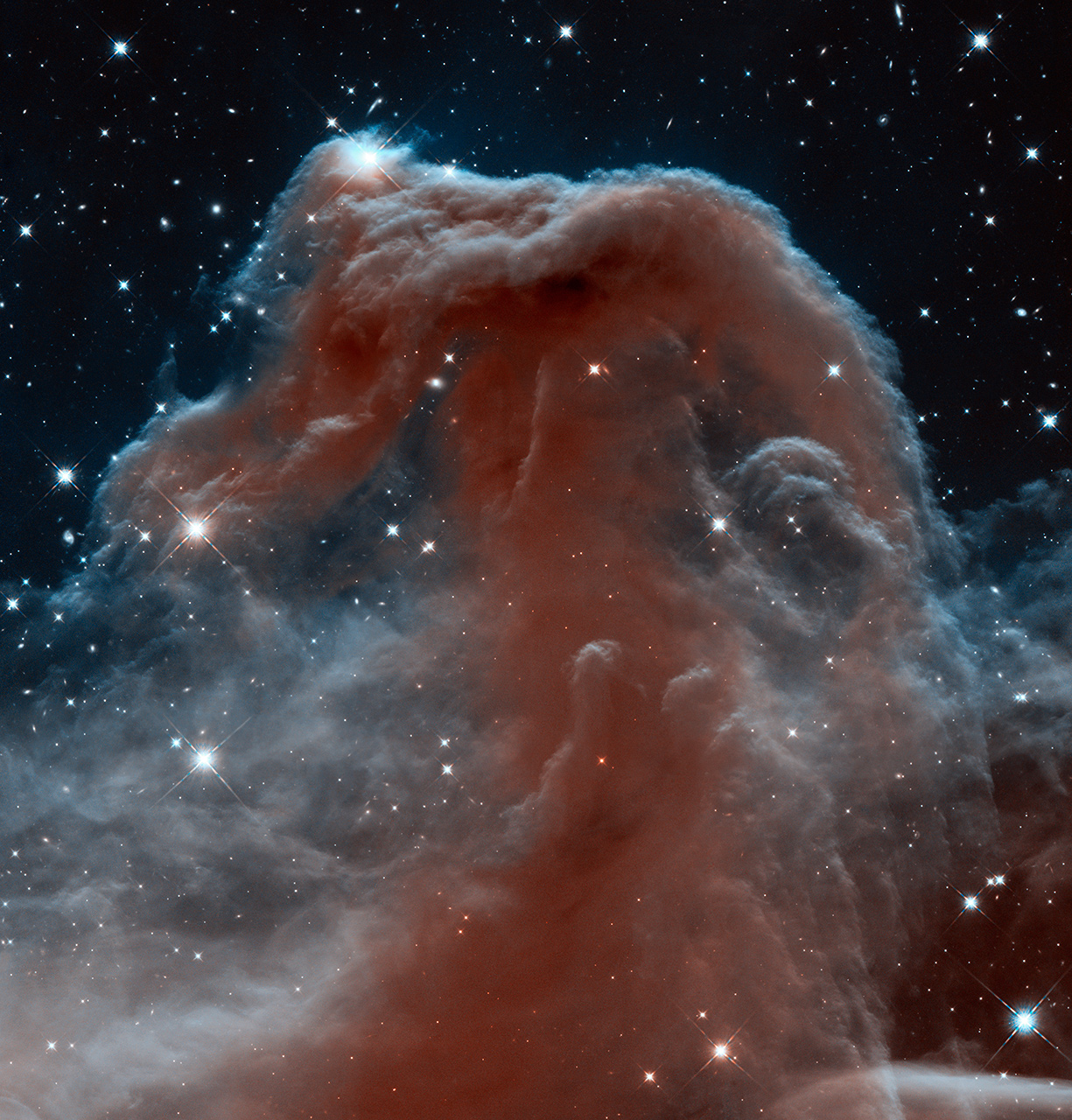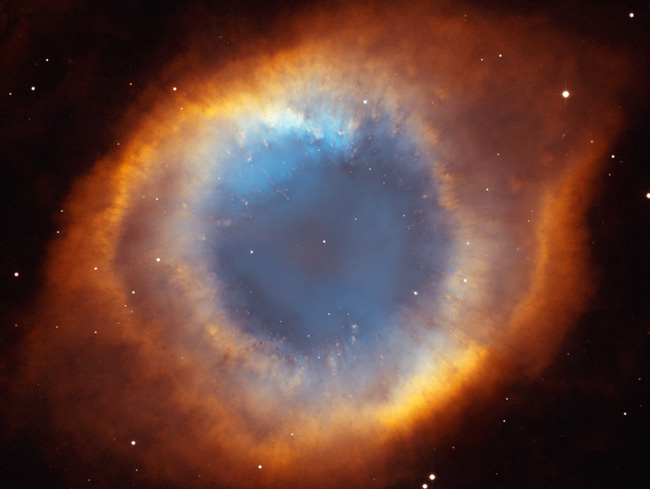Anyone interested in space should google the objects mentioned in these posts. You'll find striking images from ground-based observatories as well as Hubble and Kepler (visible and ultraviolet light), Chandra (X-rays), Spitzer (infrared), and many other earth- or sun-orbiting space telescopes.
When viewing these pictures, keep in mind that false color is often used to combine images from non-visible forms of radiation with the wavelengths our eyes can see. The resulting images are spectacular and offer many insights beyond what visible light shows, but human eyes could never see things as the combined images show them.
First, a few words on M31 and M33.
M31 / NGC 224 in Andromeda is big and close to us — so big and close that it's easy to see its brightest part, the galactic core, during the northern hemisphere's late autumn without any optical aid at all in a reasonably dark, moonless sky. It's a fuzzy elliptical patch that appears to be about the size of a quarter moon. With a medium-sized amateur telescope its tightly wound spiral arms and dust lanes become clearly visible. Like our own Milky Way (which is part of the Andromeda cluster of galaxies) M31 is orbited by many satellite galaxies, of which M32 / NGC 221 is brightest and easiest to spot.
M33 / NGC 598, the Pinwheel* Galaxy in the constellation Triangulum, appears even larger in our sky but it's far more difficult to see because its surface brightness is so low; that is, its light is spread out over a bigger area. Much better in photographs than in a small telescope. Even in the clearest skies my Celestron Super C8 Plus shows an unsatisfying, blotchy blur, nothing resembling the photos produced by earth-based or space observatories. It's another member of the Andromeda group, and may or may not be a satellite of M31. It's the third most massive galaxy in the group, after M31 and the Milky Way.
It's impossible for me to pick one favorite, but I'll venture a few (beyond the two perennially popular systems above).
The interacting pair M81 / NGC 3031 and M82 / NGC 3034 in Ursa Major have been among my favorites for decades, ever since I first spotted them on a night so cold (below zero degrees Fahrenheit) the water vapor coming off my eyeball made frost crystals when it touched on the telescope eyepiece. Though it can't be seen in amateur instruments, gravitational interaction between the two has pulled and pushed hydrogen in both galaxies into distorted forms and caused a "starburst" of exceptionally rapid star formation in M82.
NGC 660, a polar-ring galaxy, is a twisted complex with a ring of stars that orbit the core the "wrong way" — over the galactic poles instead of in the galactic equatorial plane. Polar-ring galaxies are quite rare, and NGC 660 is one of the prettiest.
NGC 4314, a starburst galaxy in Coma Berenices, features a prominent ring of brilliant new star-forming regions; we're lucky to be seeing these, since they last just a brief time before fading.
Finally I offer the enigmatic Hoag's Object in Serpens Caput, which (perhaps due to its odd structure) has escaped listing in any of the big galaxy catalogs. It is a splendid example of a ring galaxy, with a compact reddish core surrounded by a ring of newer blue-white stars with apparently almost empty space between. Although ring galaxies are very rare, a second, much more distant ring galaxy is visible through the space separating the outer and inner portions of Hoag's Object.
Ask me a year from now and I'll likely mention half a dozen others, perhaps barred spirals or other unusual forms.
Finally, on galactic collisions. Remember that galaxies are composed almost entirely of empty space. When two galaxies collide, they pass through each other, the stars with their planetary systems most likely sliding right past one another largely undisturbed. Interstellar dust and gas collide at relativistic speeds, however, generating lots of high-energy radiation that might be hazardous. It's likely that some star systems get ejected from their parent galaxies, either to become extragalactic systems or parts of long, distorted-seeming filaments reaching out from the original galaxies. Not a smash-up but a long, slow interaction.
_____________________
* M101 is also nicknamed the Pinwheel Galaxy. Hardly surprising for objects with such readily apparent spiral structures.












